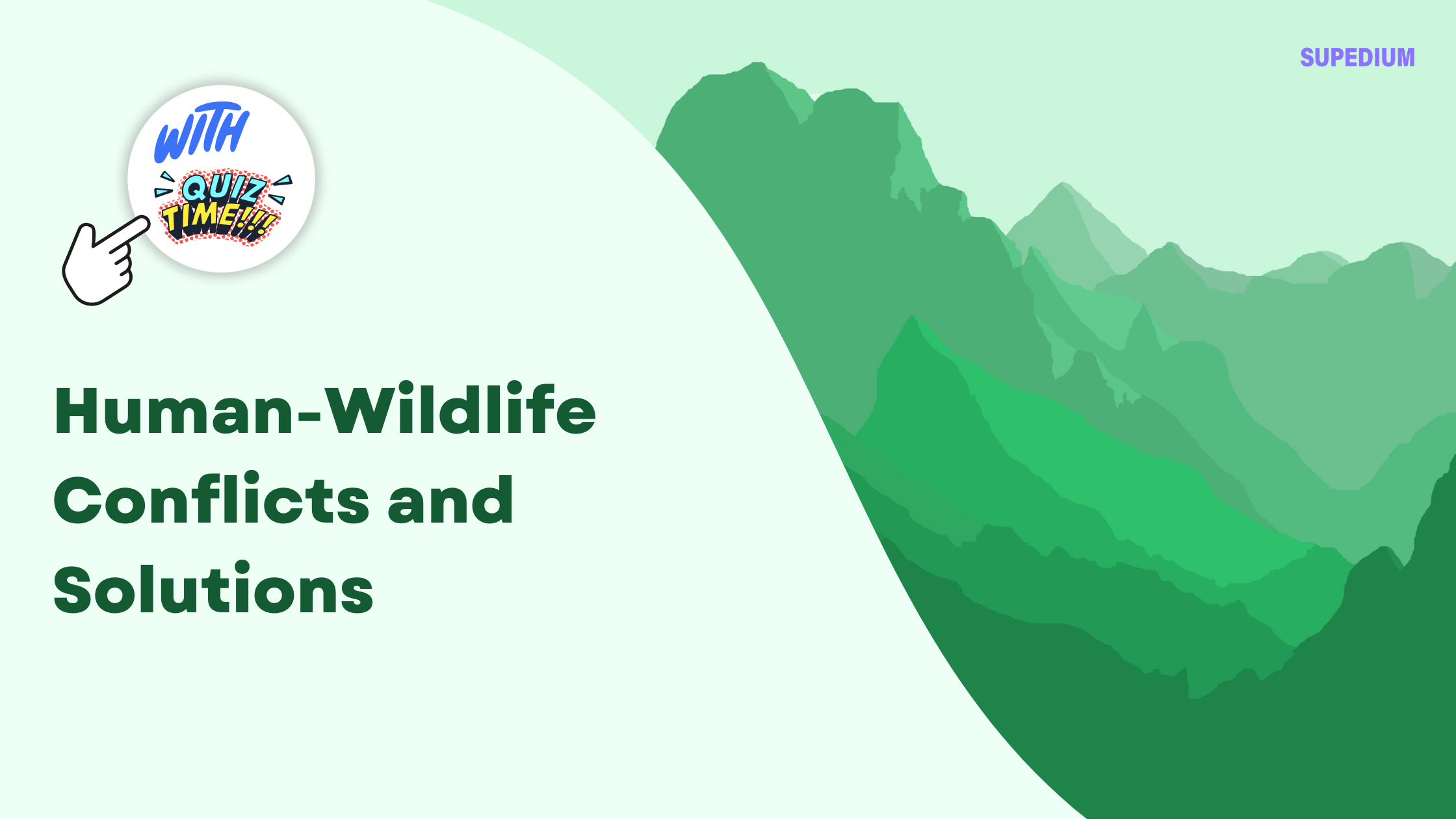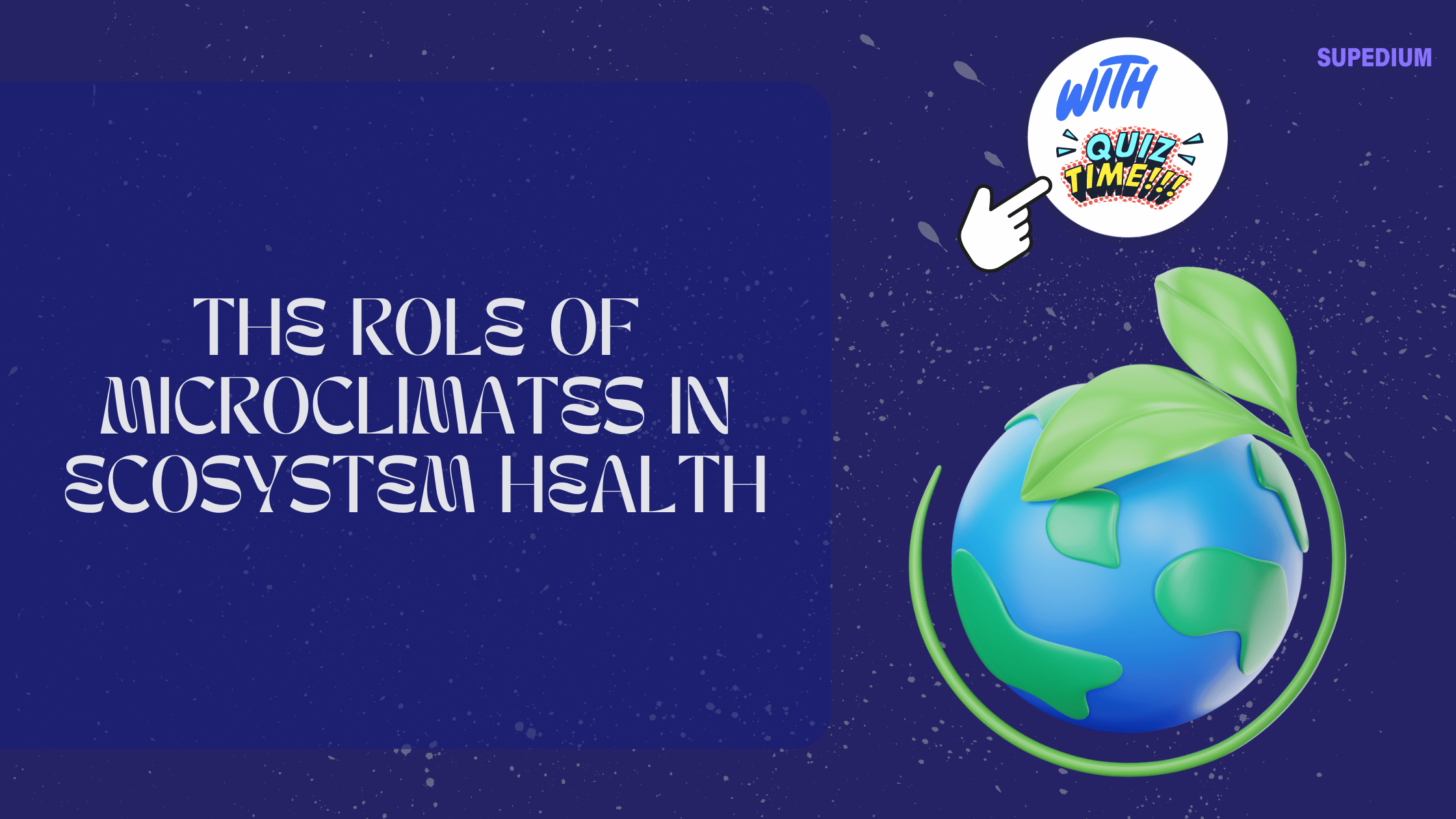Table of Contents
![]()
Introduction
Human-wildlife conflict (HWC) refers to the negative interactions that occur when wildlife and human activities intersect, resulting in harm or damage. These conflicts arise from various factors and can lead to significant impacts on both biodiversity and human communities. Addressing HWC is crucial not only for the conservation of wildlife but also for the wellbeing of people living in close proximity to wild animals. This article explores the causes, types, and solutions to human-wildlife conflicts, highlighting the importance of effective strategies and collaborative efforts.
Causes of Human-Wildlife Conflicts
- Habitat DestructionHabitat destruction is a leading cause of human-wildlife conflicts. As forests are cleared for agriculture and urban expansion, wildlife loses its natural habitat. Deforestation and land conversion disrupt ecosystems, forcing animals to encroach on human settlements in search of food and shelter. Urban sprawl further exacerbates the issue by fragmenting habitats and increasing the likelihood of wildlife coming into contact with humans.
- Agricultural PracticesAgricultural activities often lead to conflicts with wildlife. Animals such as elephants, deer, and wild boars may raid crops, causing substantial damage to farmers’ livelihoods. Similarly, large carnivores like tigers and wolves may prey on livestock, resulting in economic losses for pastoralists. The expansion of agricultural land into wildlife territories increases these interactions, as does the practice of monoculture, which reduces habitat diversity.
- Resource CompetitionWildlife and humans often compete for the same resources, such as water and food. In areas where water sources are scarce, wildlife may invade human settlements to access these resources, leading to conflicts. Similarly, competition for food resources can drive animals into agricultural areas, where they cause damage to crops and livestock.
- Poaching and Illegal Wildlife TradePoaching and the illegal wildlife trade contribute to human-wildlife conflicts by disturbing animal populations and habitats. The encroachment associated with poaching operations can lead to direct conflicts with local communities, especially when animals are driven away from their natural habitats and into human settlements.
- Climate ChangeClimate change affects wildlife migration patterns and the availability of habitats and food sources. Altered migration patterns may result in wildlife venturing into new areas, including human-dominated landscapes. Changes in habitat conditions can also force animals to move closer to human settlements in search of suitable living conditions.
Types of Human-Wildlife Conflicts
- Agricultural ConflictsAgricultural conflicts occur when wildlife damages crops or preys on livestock. For example, elephants may trample crops, while predators like leopards may hunt livestock. These conflicts can lead to significant economic losses for farmers and create tensions between wildlife conservation and agricultural interests.
- Property DamageWildlife can cause extensive damage to infrastructure, such as fences, buildings, and irrigation systems. This type of damage can be particularly problematic for communities that rely on these structures for their livelihoods. The cost of repairs and replacements can be a significant burden on affected individuals and communities.
- Health RisksHuman-wildlife conflicts can also pose health risks. Zoonotic diseases, which are transmitted from animals to humans, can spread through contact with wildlife. Additionally, invasive species introduced through human activities can impact human health by disrupting local ecosystems and spreading diseases.
- Ecological ImpactsConflicts with wildlife can disrupt ecosystems and lead to ecological imbalances. For instance, the removal of a key predator species can result in overpopulation of prey species, which in turn affects vegetation and other wildlife. Such disruptions can have cascading effects on biodiversity and ecosystem health.
Solutions and Mitigation Strategies
- Preventive Measuresa. Habitat ManagementEstablishing protected areas and wildlife corridors can help reduce human-wildlife conflicts by providing wildlife with secure habitats and migration routes. Restoring degraded habitats also plays a crucial role in mitigating conflicts by improving the availability of natural resources and reducing the need for wildlife to encroach on human settlements.b. Community Engagement and EducationRaising awareness about wildlife conservation and involving local communities in decision-making are essential for effective conflict mitigation. Educating communities about coexistence strategies and the benefits of conservation can foster positive attitudes towards wildlife and encourage collaborative problem-solving.
- Technological Solutionsa. Wildlife Monitoring and Early Warning SystemsTechnologies such as GPS tracking and camera traps enable the monitoring of wildlife movements and behaviors. Early warning systems can provide real-time alerts to communities about potential wildlife incursions, allowing them to take preventive measures.b. Innovative Barriers and DeterrentsImplementing physical barriers like electric fencing can prevent wildlife from entering agricultural fields or human settlements. Non-lethal deterrents, such as noise and light systems, can also help keep wildlife away without causing harm.
- Conflict Resolution Mechanismsa. Compensation SchemesFinancial compensation for losses caused by wildlife can alleviate the economic burden on affected individuals. Insurance schemes for livestock and crops can also provide financial protection and reduce the incentive for retaliatory killing of wildlife.b. Mediation and DialogueFacilitating communication between stakeholders, including local communities, conservationists, and policymakers, is essential for resolving conflicts. Collaborative approaches that consider the needs and concerns of all parties can lead to more effective and sustainable solutions.
- Policy and Legislationa. Legal FrameworksStrong legal frameworks and enforcement mechanisms are critical for protecting wildlife and preventing conflicts. National and international wildlife protection laws can help regulate activities that contribute to conflicts and ensure compliance with conservation goals.b. Integrated Land-Use PlanningIncorporating wildlife considerations into land-use planning can help balance development and conservation objectives. By integrating wildlife habitat needs into planning processes, it is possible to minimize conflicts and promote coexistence.
Case Studies
- Successful HWC Mitigation ExamplesVarious projects worldwide have demonstrated effective strategies for mitigating human-wildlife conflicts. For instance, the use of solar-powered electric fences in Kenya has significantly reduced elephant crop raiding. In India, community-based conservation programs have successfully involved local residents in protecting wildlife while addressing their concerns.
- Challenges and LimitationsDespite successes, implementing solutions to human-wildlife conflicts often faces challenges. Barriers such as lack of resources, cultural differences, and political constraints can hinder the effectiveness of mitigation efforts. Addressing these challenges requires ongoing research and adaptation of strategies to local contexts.
Future Directions
- Emerging Trends and ResearchAdvances in technology, such as drone monitoring and genetic research, offer new possibilities for understanding and managing human-wildlife conflicts. Continued research into wildlife behavior, ecology, and conflict resolution can provide innovative solutions and improve existing strategies.
- Collaborative EffortsInternational organizations, governments, NGOs, and local communities must work together to address human-wildlife conflicts. Cross-sectoral approaches that involve diverse stakeholders can lead to more comprehensive and sustainable solutions, promoting coexistence and conservation.
Conclusion
Human-wildlife conflicts are complex issues with significant implications for both wildlife and human communities. Understanding the causes and types of conflicts, as well as implementing effective solutions, is essential for mitigating these challenges. By engaging in preventive measures, leveraging technological innovations, and fostering collaboration, it is possible to address human-wildlife conflicts and promote a harmonious coexistence between people and wildlife.






Be the first to comment